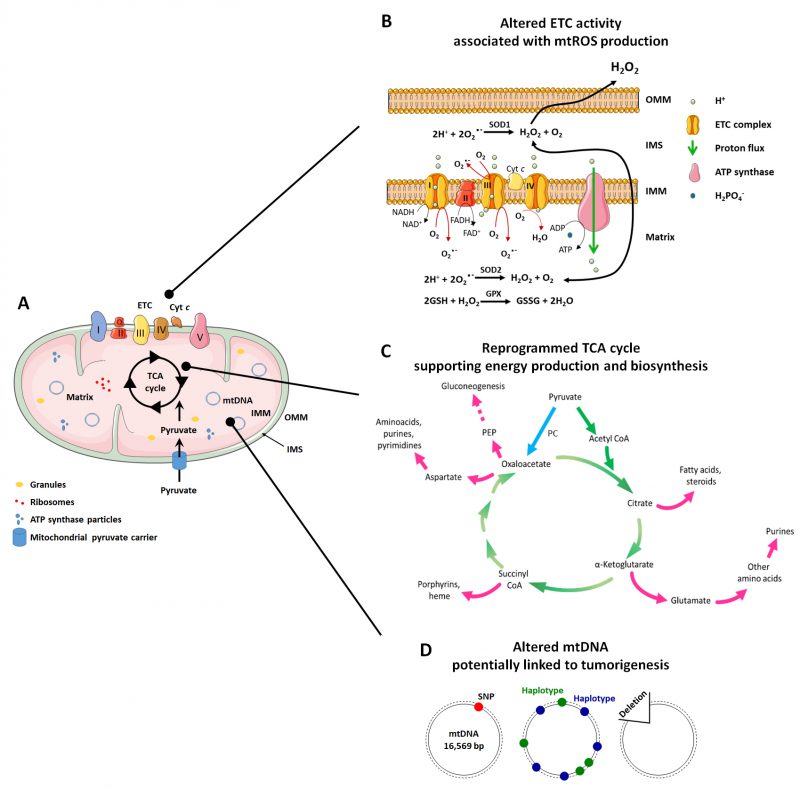Back to article: Mitochondria in cancer
FIGURE 1: Cancer is associated with alterations of mitochondrial functions. (A) Mitochondria in normal and in cancer cells are composed of three compartments. They are separated from the cell cytosol by an outer membrane (OMM), an intermembrane space (IMS), and an inner membrane (IMM) that forms invaginations called “crests”. The IMM delimitates the mitochondrial matrix, a gelatinous material containing mitochondrial DNA (mtDNA), granules, ribosomes and ATP synthase particles. The mitochondrial matrix hosts the tricarboxylic acid (TCA) cycle, while the IMM hosts the electron transport chain (ETC). (B) In highly metabolically active or hypoxic cancer cells much more than in normal cells under normal conditions, electrons escape during mitochondrial electron transport at Complexes I and III generate superoxide (O2–) from oxygen (O2) in both the IMS and the matrix. O2– is immediately dismutated to H2O2 either spontaneously or under the catalysis of superoxide dismutases SOD1 (in the IMS) or SOD2 (in the matrix). In the matrix, H2O2 can be neutralized by glutathione (GSH). It can also signal to the cytosol. (C) In cancer cells, the TCA cycle not only serve to produce reducing equivalents to fuel the ETC (green arrows), but also to generate biosynthetic intermediates that are necessary for cell proliferation (pink arrows). The most important anaplerotic reaction produces oxaloacetate directly from pyruvate, and is catalyzed by pyruvate carboxylase (PC) (blue arrow). Oxaloacetate can further be converted to phosphoenolpyruvate (PEP) by PEP carboxykinase (PC), contributing to gluconeogenesis. (D) Mitochondrial DNA (mtDNA) variations, including single nucleotide polymorphisms (SNPs), maternally inherited haplotypes and deletions have been studied for their association with cancer. Among these, only large mtDNA deletions seem to be associated with malignancies. Cyt c – cytochrome c; Gpx – glutathione peroxidase; Q – coenzyme Q10.

